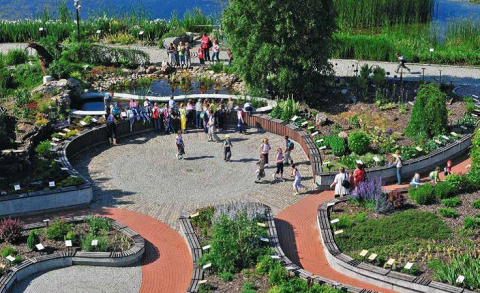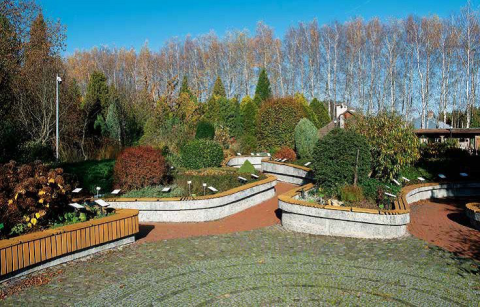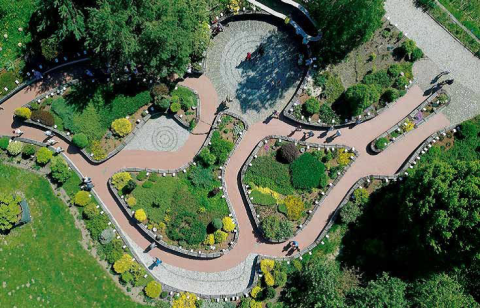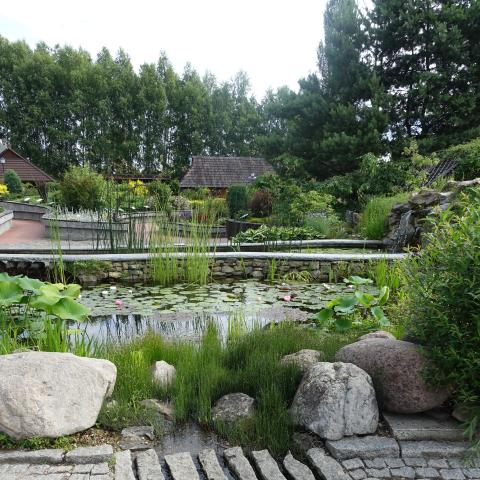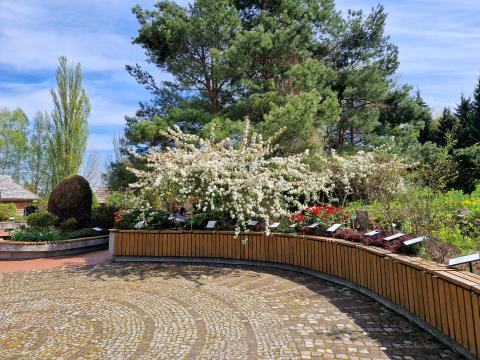
The Sensory Garden at the Bolestraszyce Arboretum in the Podkarpackie Region

About this good practice
The Universal Garden at the Bolestraszyce Arboretum consists of 6 parts: the Sensory Garden, the ‘Through Touch’ Gallery, the Typhloplanetarium, the Garden of Permanent Changes, the Calvary House, and the Open-air Museum. The centre is the Sensory Garden, where the idea of a garden for the blind and partially-sighted people is realised.
Getting to know plants in their natural environment is difficult for persons with disabilities. Tourism not only gives them the pleasure of exploring the world, but also serves rehabilitation and health functions.
In the Sensory Garden, plants have been grown in specially raised beds and selected to appeal to the different senses, providing a range of tactile, olfactory and auditory experiences. Each plant has a description on information panel, written in Braille and on a large print for older adults and visually impaired persons. The communication system is clear and the use of wide pathways allows for wheelchair users to get around. The visually impaired are assisted by qualified guides – typhlologists.
Since the establishment of the sensory garden, many groups including e.g. the Polish Association of the Blind, the schools for children with special education needs, the occupational therapy workshop are visiting this space more and more often.
The garden is used for educational activities for people of different age. It has become an important point on the map of Polish tourist attractions accessible to persons with disabilities.
Resources needed
The construction and planting of a sensory garden costed ~500k €.
Maintenance costs are approximately ~100k € per year (e.g. repairs, replanting, salaries of staff, etc.). These costs are partly covered by the sale of tickets (a regular ticket costs €6).
At least 1 typhlologist is needed.
Evidence of success
The Sensory Garden attracts many visitors (~100 000 per year). Visiting the garden allows educational activities for disabled people, older adults. The opening of the garden has led to an increase in the participation of people from special education centres, occupational therapy workshops, the Polish Association for People with Intellectual Disabilities, the Polish Association of the Blind etc. Every year more than 20 groups of disabled persons visit the Sensory Garden (28 groups in 2023).
Potential for learning or transfer
The Universal Sensory Garden is accessible to everyone, including persons with disabilities. Relatively little space for garden is needed. It is possible to expand plant collection. It is easy to ensure safety, compared with educational trails in the middle of the forest. Challenges that may be encountered during the implementation of the practice include high start-up costs, high maintenance costs and lack of qualified staff, especially teachers for persons with learning disabilities.
This garden remains a model and an inspiration for similar objects created throughout the country and can be created in other countries.
Based on the experience gained in Bolestraszyce, similar gardens are currently being created in Poland: in the Arboretum of the Ecological Education Center in Janów Lubelski (Lubelskie Region) and in the Forest Culture Center in Gołuchów (Wielkopolskie Region).
Further information
Images
Website
Good practice owner
You can contact the good practice owner below for more detailed information.
